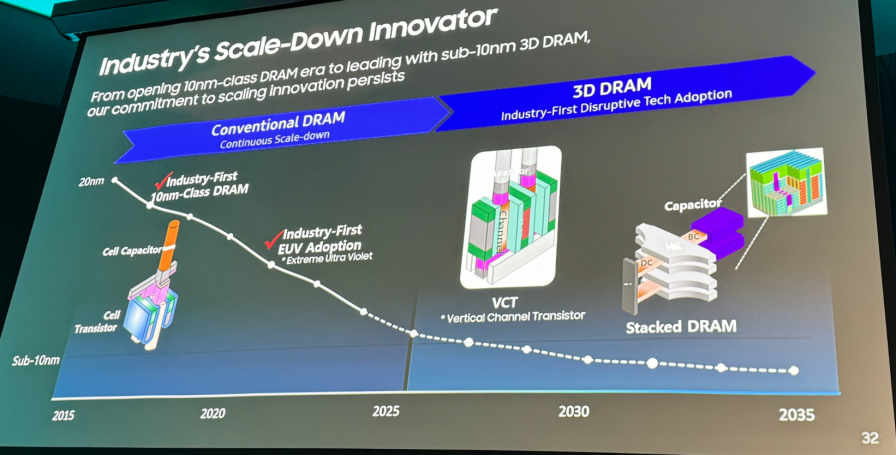Samsung Electronics has set its sights on becoming the frontrunner in the emerging field of 3D DRAM memory, according to a report from Semiconductor Engineering. This announcement, made at the Memcon 2024 conference, highlights the company’s strategic move to address the limitations of traditional memory designs as the industry pushes towards even smaller chip sizes.
Samsung Unveils 3D DRAM Technology for Next-Generation Memory Solutions
With DRAM line widths expected to dip below 10nm in the latter half of this decade, current memory architectures are nearing their scaling limits. This has spurred the exploration of innovative solutions like 3D DRAM, which promises significant benefits in terms of capacity and footprint reduction.

At Memcon 2024, Samsung showcased two key technologies for 3D DRAM: Vertical Channel Transistors and Stacked DRAM. Vertical Channel Transistors represent a fundamental shift in transistor design. By turning the current flow channel from horizontal to vertical, Samsung aims to significantly reduce the transistor’s footprint. However, this approach also demands much higher precision in the etching process.
Stacked DRAM, on the other hand, focuses on maximizing space utilization. Unlike traditional 2D DRAM that utilizes only the horizontal plane, Stacked DRAM leverages the vertical dimension (z-axis) to stack multiple layers of memory cells within a single chip. This innovative approach has the potential to boost single-chip capacity to over 100GB, a substantial leap compared to current limitations.

These developments in 3D DRAM technology are part of Samsung’s long-term roadmap to enhance memory capabilities for various applications, including data centers, consumer electronics, and emerging technologies like artificial intelligence and 5G networks.
The market for 3D DRAM is projected to reach a staggering $100 billion by 2028. To solidify its lead in this race, Samsung has taken proactive steps by establishing a dedicated 3D DRAM research lab in Silicon Valley earlier this year. This strategic move positions them to attract top talent and accelerate their research and development efforts. Samsung is also exploring MUF Technology to manufacture next-generation DRAM for servers.
Samsung’s ambitions in 3D DRAM mark a significant push towards a new era of memory technology. If successful, this innovation could pave the way for even more powerful and compact electronic devices in the years to come. The competition in this space is sure to intensify as other major memory manufacturers scramble to catch up. However, with its head start and commitment to research, Samsung appears well-positioned to claim the crown in the 3D DRAM revolution.
RELATED:
- Galaxy Z Fold 6 Ultra could be Samsung’s third foldable phone this year
- Samsung launches 20,000mAh power bank in China, offers triple USB-C ports & 45W charging
- How to add custom GIFs and stickers to WhatsApp
- Get $100 OFF on Xiaomi 14 Pro at Giztop (1TB Variant)
- Lenovo Legion Y700 2023: Save $100 on this 8-inch gaming Android tablet
(Source)






